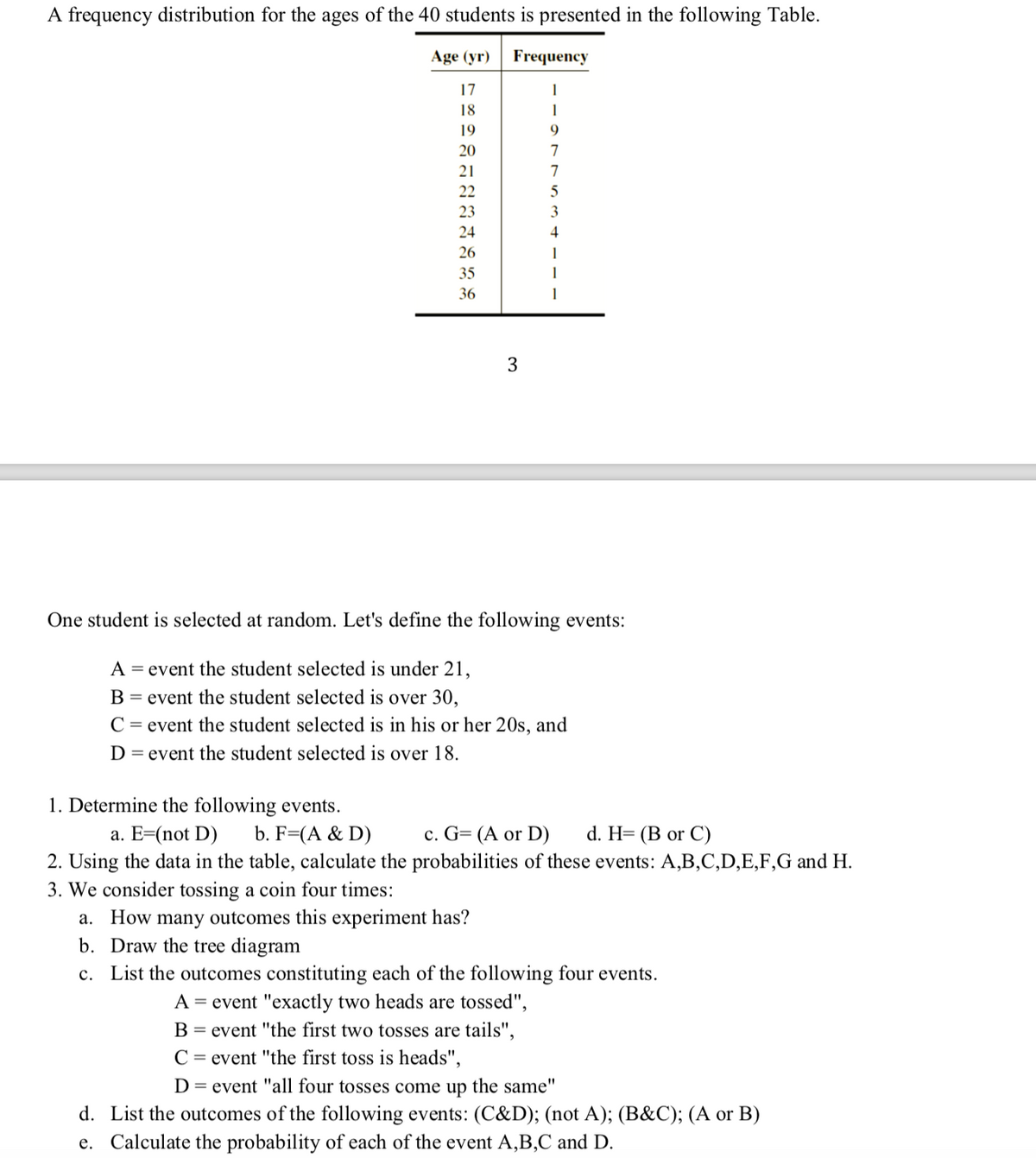Please can you help me for question 3 ( d and e )
Holt Mcdougal Larson Pre-algebra: Student Edition 2012
1st Edition
ISBN:9780547587776
Author:HOLT MCDOUGAL
Publisher:HOLT MCDOUGAL
Chapter11: Data Analysis And Probability
Section: Chapter Questions
Problem 8CR
Related questions
Question
Please can you help me for question 3 ( d and e )

Transcribed Image Text:A frequency distribution for the ages of the 40 students is presented in the following Table.
Age (yr)
Frequency
17
18
1
19
9
20
7
21
7
22
23
3
24
4
26
35
36
1
3.
One student is selected at random. Let's define the following events:
A = event the student selected is under 21,
B = event the student selected is over 30,
C = event the student selected is in his or her 20s, and
D = event the student selected is over 18.
1. Determine the following events.
a. E=(not D)
b. F=(A & D)
c. G= (A or D)
d. H= (B or C)
2. Using the data in the table, calculate the probabilities of these events: A,B,C,D,E,F,G and H.
3. We consider tossing a coin four times:
a. How many outcomes this experiment has?
b. Draw the tree diagram
c. List the outcomes constituting each of the following four events.
A = event "exactly two heads are tossed",
B = event "the first two tosses are tails",
C = event "the first toss is heads",
D = event "all four tosses come up the same"
d. List the outcomes of the following events: (C&D); (not A); (B&C); (A or B)
e. Calculate the probability of each of the event A,B,C and D.
Expert Solution
This question has been solved!
Explore an expertly crafted, step-by-step solution for a thorough understanding of key concepts.
Step by step
Solved in 3 steps with 3 images

Recommended textbooks for you

Holt Mcdougal Larson Pre-algebra: Student Edition…
Algebra
ISBN:
9780547587776
Author:
HOLT MCDOUGAL
Publisher:
HOLT MCDOUGAL


Holt Mcdougal Larson Pre-algebra: Student Edition…
Algebra
ISBN:
9780547587776
Author:
HOLT MCDOUGAL
Publisher:
HOLT MCDOUGAL
